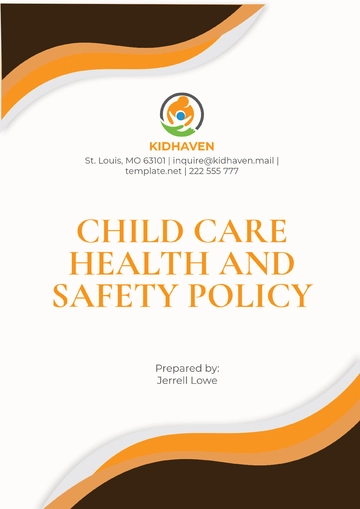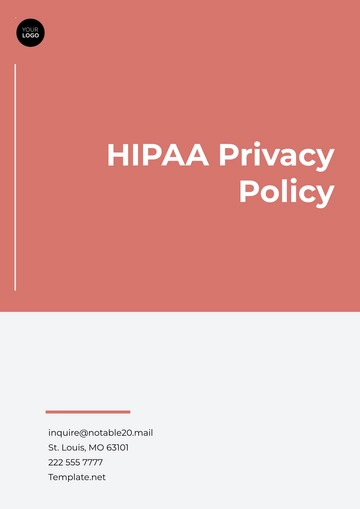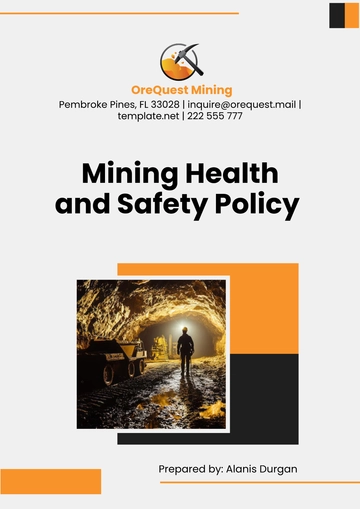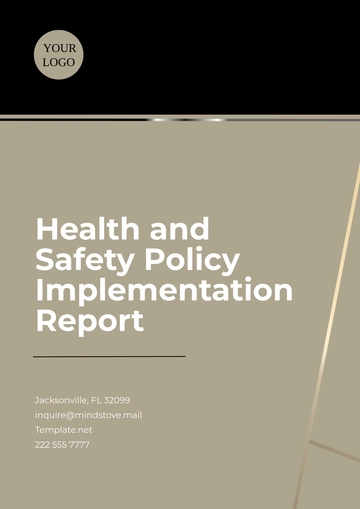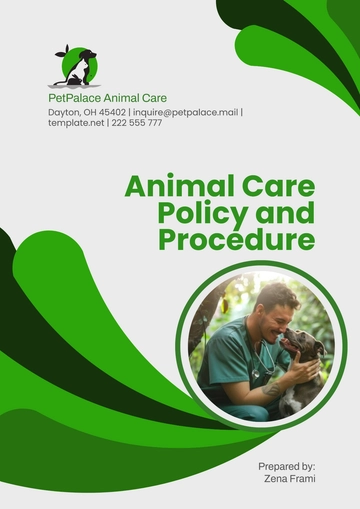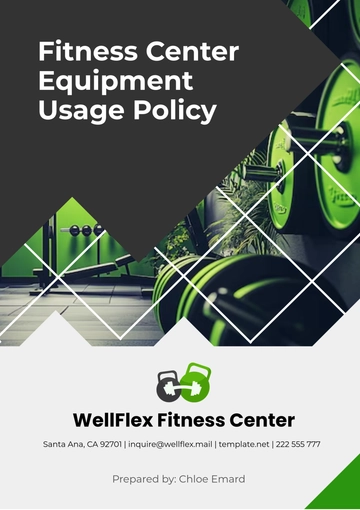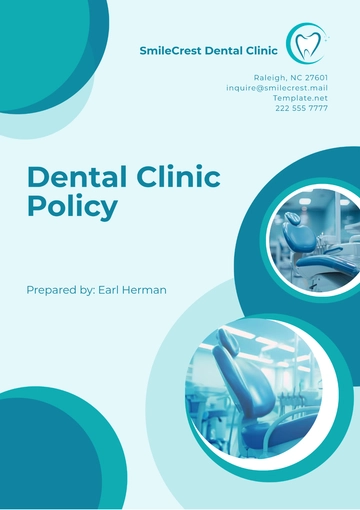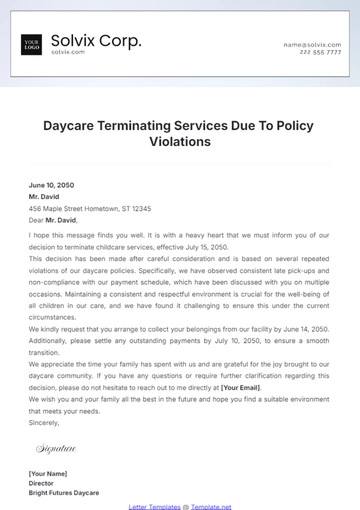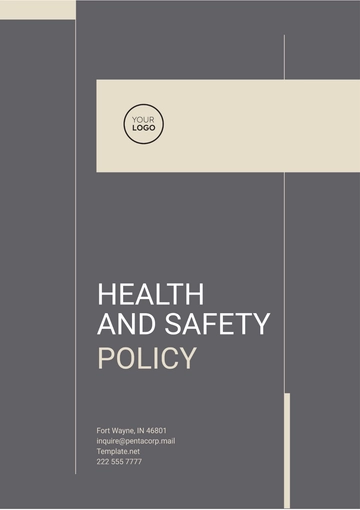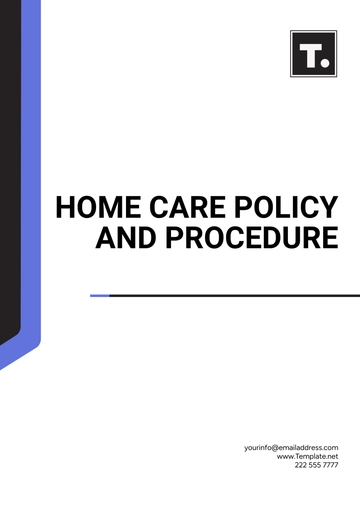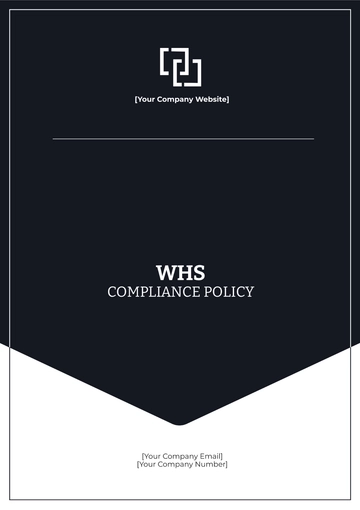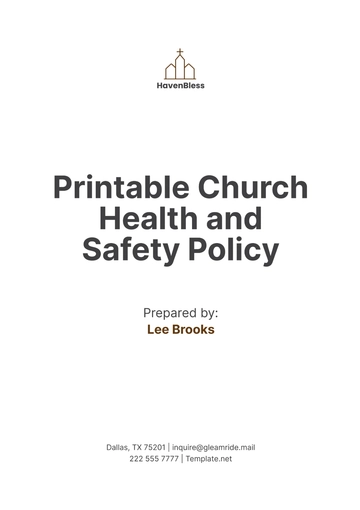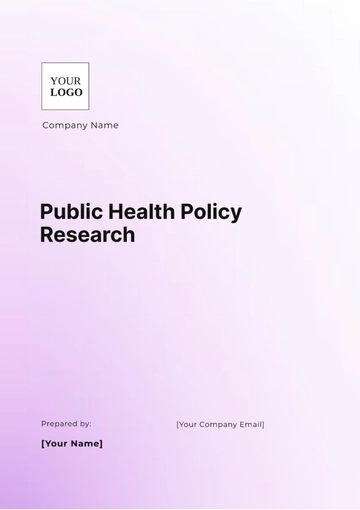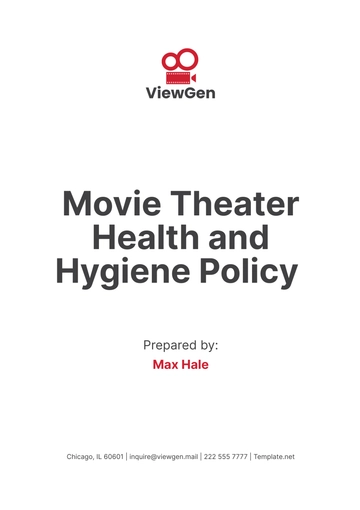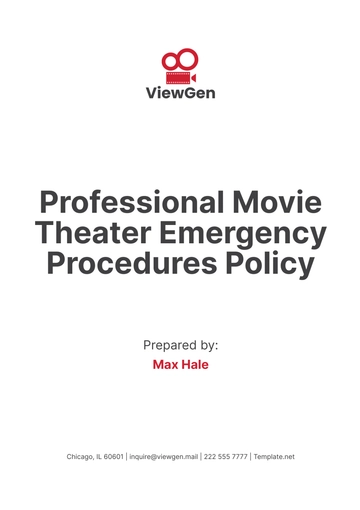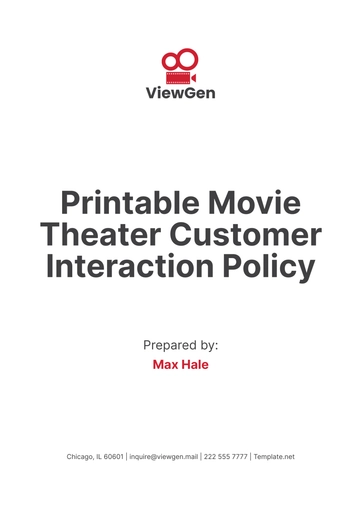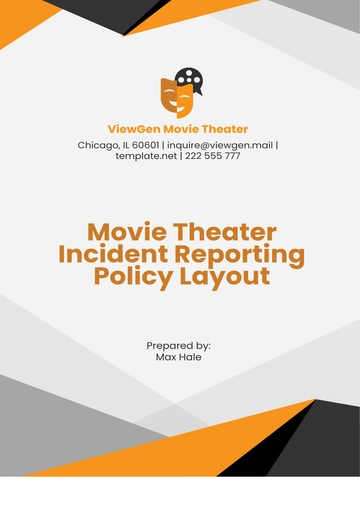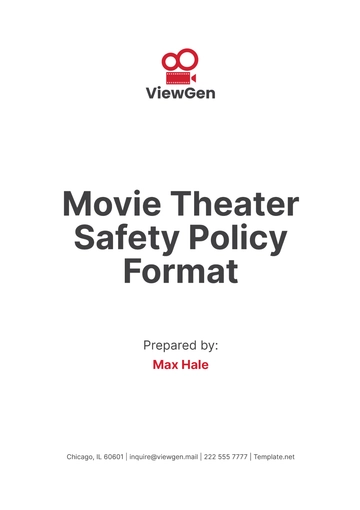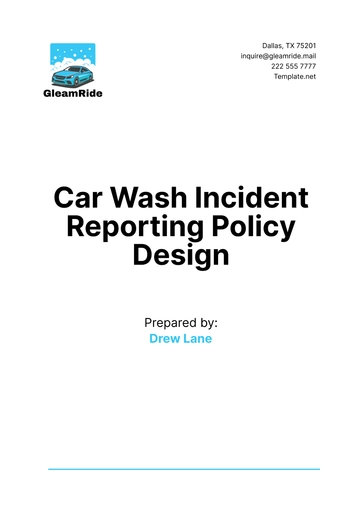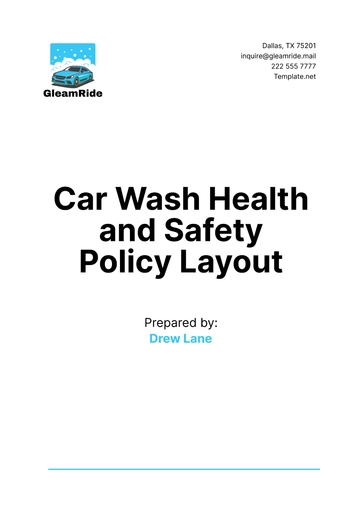Free Car Wash Incident Reporting Policy Design
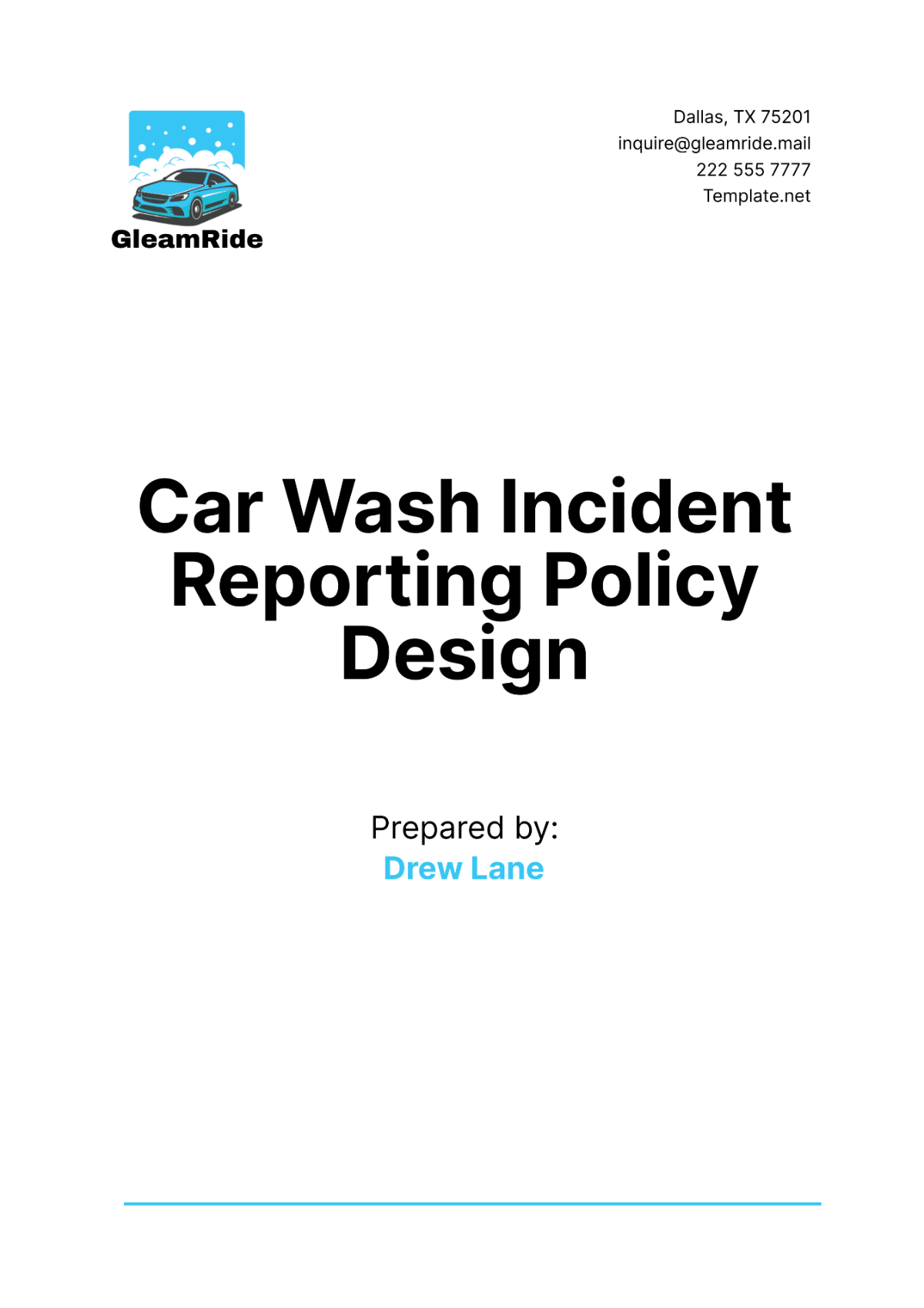
I. Introduction
The purpose of this Car Wash Incident Reporting Policy of [Your Company Name] is to establish clear guidelines for reporting and addressing incidents that occur within our facilities. This policy aims to ensure that all incidents are promptly reported, properly documented, and effectively managed to maintain a safe and secure environment for our employees and customers.
A. Purpose
Ensure Prompt Reporting: To ensure that all incidents, regardless of severity, are promptly reported to the appropriate personnel. Timely reporting is crucial for immediate action and mitigation.
Standardize Documentation: To provide a standardized approach for documenting incidents. Consistent documentation helps in tracking, analyzing, and preventing future incidents.
Enhance Safety and Security: To enhance the overall safety and security of the car wash environment by identifying and addressing potential hazards. Continuous improvement of safety protocols is a primary goal.
Legal and Regulatory Compliance: To ensure compliance with relevant legal and regulatory requirements regarding incident reporting. Adhering to these requirements protects the company and its stakeholders.
B. Scope
All Employees: This policy applies to all employees of [Your Company Name], regardless of their position or location. Every employee is responsible for reporting incidents.
Types of Incidents: It covers all types of incidents including accidents, injuries, near-misses, property damage, and any unsafe conditions. Comprehensive coverage ensures no incident goes unreported.
Reporting Channels: It includes all reporting channels such as verbal, written, and digital reports. Multiple channels facilitate easy and accessible reporting for all employees.
C. Target Audience
Management and Supervisors: Management and supervisors play a critical role in overseeing the implementation of this policy and ensuring compliance. Their leadership is vital for effective incident management.
Operational Staff: All operational staff who are directly involved in the car wash process must adhere to the reporting guidelines outlined in this policy. Their vigilance ensures a safer working environment.
Support Staff: Support staff, including administrative and maintenance personnel, are also responsible for adhering to this policy. Their involvement is essential for comprehensive incident reporting.
D. Key Definitions
Incident: Any event that results in or has the potential to result in injury, property damage, or disruption of operations.
Near-Miss: An event that did not result in injury or damage but had the potential to do so.
Unsafe Condition: Any condition that poses a risk to health, safety, or property. Identifying and reporting unsafe conditions is a proactive safety measure.
II. Incident Reporting Procedure
The following table outlines the steps for the incident reporting procedure at [Your Company Name]:
No. | Step | Description |
|---|---|---|
1 | Immediate Notification | Inform the supervisor immediately after an incident occurs. |
2 | Incident Report Form | Complete the incident report form with all relevant details. |
3 | Preliminary Investigation | Conduct an initial investigation to gather facts. |
4 | Report Submission | Submit the completed report to the safety officer. |
5 | Follow-Up Action | Implement corrective actions based on the investigation. |
A. Immediate Notification
Inform Supervisor: Employees must inform their immediate supervisor immediately after an incident occurs. Immediate notification allows for prompt response and containment.
Verbal and Written Notice: The initial notification can be verbal but must be followed by a written notice within 24 hours. Written notice ensures accurate and documented reporting.
B. Incident Report Form
Complete Form: The employee involved or who witnessed the incident must complete the incident report form with all relevant details. Detailed forms provide comprehensive information for investigations.
Include All Details: The form should include the date, time, location, individuals involved, description of the incident, and any immediate actions taken. Complete information aids in thorough investigations.
C. Preliminary Investigation
Gather Facts: The supervisor or safety officer will conduct an initial investigation to gather facts about the incident. Fact-gathering helps in understanding the cause and impact of the incident.
Interview Witnesses: Interview any witnesses to the incident to get different perspectives. Witness statements are valuable for an accurate account of the incident.
D. Report Submission
Submit Report: The completed incident report form must be submitted to the designated safety officer. Submission ensures the report is reviewed and acted upon promptly.
Document Receipt: The safety officer must document the receipt of the report and acknowledge it. Documentation of receipt ensures accountability and tracking.
E. Follow-Up Action
Implement Corrective Actions: Based on the investigation findings, implement appropriate corrective actions to prevent recurrence. Corrective actions are crucial for improving safety.
Monitor Effectiveness: Monitor the effectiveness of the implemented actions and make adjustments as necessary. Continuous monitoring ensures sustained improvement.
III. Roles and Responsibilities
A. Employees
Report Incidents Promptly: All employees are responsible for reporting incidents promptly and accurately. Prompt reporting ensures timely intervention and mitigation.
Follow Reporting Procedures: Employees must adhere to the established reporting procedures without deviation. Following procedures ensures consistency and reliability in reporting.
Participate in Investigations: Employees are expected to participate in investigations and provide honest and detailed information. Participation enhances the quality of investigations.
Comply with Safety Policies: Employees must comply with all safety policies and procedures to prevent incidents. Compliance is fundamental to maintaining a safe workplace.
B. Supervisors
Immediate Response: Supervisors must respond immediately to reported incidents and ensure the safety of all involved. Immediate response is critical for damage control.
Conduct Initial Investigation: Supervisors are responsible for conducting an initial investigation and gathering facts. Thorough initial investigations lay the groundwork for comprehensive analysis.
Ensure Report Submission: Supervisors must ensure that the incident report form is completed and submitted to the safety officer. Ensuring submission maintains the reporting chain.
Implement Immediate Actions: Based on preliminary findings, supervisors should implement immediate corrective actions. Immediate actions can prevent further harm.
C. Safety Officer
Review Reports: The safety officer must review all submitted incident reports for completeness and accuracy. Review ensures the quality and reliability of reports.
Conduct Comprehensive Investigations: Safety officers are responsible for conducting comprehensive investigations to identify root causes. Comprehensive investigations uncover underlying issues.
Develop Corrective Actions: Based on the investigation findings, develop and recommend corrective actions. Developing actions is key to addressing identified risks.
Monitor Implementation: Monitor the implementation of corrective actions and assess their effectiveness. Monitoring ensures actions are effective and sustained.
D. Management
Provide Resources: Management must provide the necessary resources for incident reporting and investigation processes. Providing resources supports effective implementation.
Support Safety Initiatives: Actively support safety initiatives and encourage a culture of safety within the organization. Support from management is essential for fostering a safety culture.
Review Reports: Regularly review incident reports and investigation outcomes to identify trends and areas for improvement. Review helps in strategic planning for safety improvements.
Ensure Compliance: Ensure compliance with all legal and regulatory requirements related to incident reporting. Compliance is crucial for avoiding legal repercussions.
IV. Incident Investigation Process
A. Investigation
The following table outlines the steps in the incident investigation process:
No. | Step | Description |
|---|---|---|
1 | Secure the Scene | Ensure the incident scene is safe and secure. |
2 | Collect Evidence | Gather physical evidence and document the scene. |
3 | Interview Witnesses | Conduct interviews with witnesses and involved parties. |
4 | Analyze Information | Analyze all collected information to determine root causes. |
5 | Develop Action Plan | Create an action plan to address identified issues. |
Secure the Scene: Ensure the incident scene is safe and secure to prevent further harm. Securing the scene preserves evidence and maintains safety.
Collect Evidence: Gather physical evidence and document the scene through photos, videos, and sketches. Evidence collection is crucial for a thorough investigation.
Interview Witnesses: Conduct interviews with witnesses and involved parties to gather detailed accounts of the incident. Witness interviews provide varied perspectives.
Analyze Information: Analyze all collected information to identify root causes and contributing factors. Analysis helps in understanding the underlying issues.
Develop Action Plan: Create an action plan to address the identified issues and prevent recurrence. Action plans outline steps for improvement.
B. Root Cause Analysis
Identify Root Causes: Use root cause analysis techniques to identify the underlying causes of the incident. Identifying root causes addresses fundamental issues.
Determine Contributing Factors: Identify any contributing factors that may have exacerbated the incident. Understanding contributing factors provides a comprehensive view.
Develop Corrective Actions: Based on the root causes and contributing factors, develop targeted corrective actions. Targeted actions are more effective in prevention.
Implement Corrective Actions: Ensure that the developed corrective actions are implemented promptly. Prompt implementation reduces risks.
Monitor Effectiveness: Monitor the effectiveness of the corrective actions and make necessary adjustments. Continuous monitoring ensures sustained improvement.
C. Documentation and Reporting
Complete Investigation Report: Document the findings of the investigation in a comprehensive report. Detailed reports provide a clear record of the incident and investigation.
Submit Report to Management: Submit the completed investigation report to management for review. Management review ensures oversight and accountability.
Recordkeeping: Maintain records of all incident reports and investigations for future reference. Recordkeeping supports trend analysis and continuous improvement.
Review and Update Policies: Based on the findings, review and update relevant policies and procedures. Regular updates ensure policies remain effective and relevant.
D. Follow-Up Actions
Implement Changes: Implement changes based on the findings of the investigation to prevent recurrence. Implementing changes demonstrates a commitment to improvement.
Training and Awareness: Conduct training and awareness programs to educate employees on the changes and preventive measures. Training ensures employees are informed and prepared.
Monitor Compliance: Monitor compliance with the implemented changes and corrective actions. Monitoring ensures adherence to new procedures.
Continuous Improvement: Foster a culture of continuous improvement by regularly reviewing and updating safety practices. Continuous improvement enhances overall safety.
V. Incident Reporting Channels
A. Reporting Tools
The following table outlines the reporting tools available for incident reporting at [Your Company Name]:
No. | Tool | Description |
|---|---|---|
1 | Incident Report Form | A standardized form for documenting incidents. |
2 | Digital Reporting System | An online system for submitting and tracking incident reports. |
3 | Verbal Reporting | Direct verbal communication to supervisors. |
4 | Anonymous Reporting | A method for employees to report incidents anonymously. |
Incident Report Form: A standardized form for documenting incidents ensures consistency and comprehensiveness in reporting.
Digital Reporting System: An online system for submitting and tracking incident reports provides accessibility and efficiency in reporting.
Verbal Reporting: Direct verbal communication to supervisors allows for immediate reporting of incidents.
Anonymous Reporting: A method for employees to report incidents anonymously encourages reporting of sensitive issues without fear of retaliation.
B. Reporting Procedures
Form Completion: Employees must complete the incident report form with all relevant details. Comprehensive forms capture all necessary information.
Digital Submission: Employees can submit incident reports through the digital reporting system. Digital submission facilitates easy and efficient reporting.
Verbal Notification: Employees can verbally notify their supervisors about an incident, followed by a written report. Verbal notification ensures immediate action.
Anonymous Reporting: Employees can use the anonymous reporting channel to report incidents without revealing their identity. Anonymous reporting protects employee confidentiality.
C. Communication and Training
Employee Training: Conduct regular training sessions on incident reporting procedures. Training ensures employees understand and adhere to reporting protocols.
Communication Channels: Ensure all employees are aware of the available communication channels for reporting incidents. Clear communication channels facilitate reporting.
Policy Awareness: Regularly communicate the incident reporting policy to all employees. Policy awareness ensures employees are informed of their responsibilities.
Feedback Mechanism: Establish a feedback mechanism for employees to provide input on the incident reporting process. Feedback helps in improving the process.
VI. Incident Review and Analysis
A. Review Process
The following table outlines the incident review process at [Your Company Name]:
No. | Process | Description |
|---|---|---|
1 | Initial Review | Conduct an initial review of the incident report. |
2 | Detailed Analysis | Perform a detailed analysis of the incident. |
3 | Root Cause Identification | Identify the root cause of the incident. |
4 | Action Plan Development | Develop an action plan based on the findings. |
5 | Implementation and Follow-Up | Implement the action plan and follow up on its effectiveness. |
Initial Review: Conduct an initial review of the incident report to ensure all necessary information is included.
Detailed Analysis: Perform a detailed analysis of the incident to understand the circumstances and factors involved.
Root Cause Identification: Identify the root cause of the incident to address the underlying issues.
Action Plan Development: Develop an action plan based on the findings to prevent future occurrences.
Implementation and Follow-Up: Implement the action plan and follow up on its effectiveness to ensure continuous improvement.
B. Corrective Actions
Immediate Measures: Implement immediate measures to address any urgent safety concerns identified during the review.
Long-Term Solutions: Develop and implement long-term solutions to address the root causes of the incident.
Monitoring and Evaluation: Continuously monitor and evaluate the effectiveness of the corrective actions to ensure they are achieving the desired outcomes.
Documentation: Document all corrective actions taken and their outcomes for future reference and analysis.
C. Reporting to Management
Regular Updates: Provide regular updates to management on the status of incident reviews and corrective actions.
Detailed Reports: Submit detailed reports to management outlining the findings of the incident review and the corrective actions taken.
Recommendations: Provide recommendations to management based on the incident review findings to improve overall safety practices.
Management Feedback: Incorporate feedback from management into the incident review and corrective action process to enhance its effectiveness.
VII. Incident Response and Emergency Procedures
A. Immediate Response
The following table outlines the immediate response procedures for incidents at [Your Company Name]:
No. | Procedure | Description |
|---|---|---|
1 | Assess the Situation | Assess the situation to determine the severity of the incident. |
2 | Ensure Safety | Ensure the safety of all individuals involved in the incident. |
3 | Provide First Aid | Provide first aid to any injured individuals if necessary. |
4 | Notify Emergency Services | Notify emergency services if the situation requires. |
5 | Secure the Area | Secure the area to prevent further incidents. |
Assess the Situation: Quickly assess the situation to determine the severity of the incident and the necessary response.
Ensure Safety: Ensure the safety of all individuals involved in the incident, prioritizing their well-being.
Provide First Aid: Provide first aid to any injured individuals if necessary, following standard first aid procedures.
Notify Emergency Services: Notify emergency services if the situation requires their assistance, providing them with all relevant information.
Secure the Area: Secure the area to prevent further incidents and ensure the safety of others.
B. Emergency Contact Information
Emergency Services: Ensure all employees have access to emergency contact information for local emergency services.
Internal Contacts: Provide contact information for internal personnel responsible for incident response and management.
Medical Facilities: Ensure employees are aware of the nearest medical facilities and their contact information.
Safety Officer: Include the contact information for the safety officer responsible for overseeing incident response.
C. Communication During Emergencies
Clear Instructions: Provide clear instructions to employees on how to communicate during emergencies.
Emergency Protocols: Ensure employees are familiar with the emergency protocols and procedures.
Communication Channels: Establish and maintain effective communication channels for use during emergencies.
Regular Drills: Conduct regular emergency drills to ensure employees are prepared and know how to respond in an emergency.
VIII. Training and Awareness Programs
A. Employee Training
The following table outlines the training programs for employees at [Your Company Name]:
No. | Training Program | Description |
|---|---|---|
1 | Incident Reporting | Training on incident reporting procedures and protocols. |
2 | Safety Awareness | Training on general safety awareness and best practices. |
3 | Emergency Response | Training on emergency response procedures and protocols. |
4 | First Aid | Training on providing first aid in the event of an incident. |
Incident Reporting: Provide training on incident reporting procedures and protocols to ensure employees understand how to report incidents accurately and promptly.
Safety Awareness: Conduct training on general safety awareness and best practices to prevent incidents and promote a safe working environment.
Emergency Response: Provide training on emergency response procedures and protocols to ensure employees know how to respond effectively in an emergency.
First Aid: Offer training on providing first aid in the event of an incident, equipping employees with the skills to assist injured individuals.
B. Awareness Campaigns
Regular Campaigns: Conduct regular safety awareness campaigns to keep safety at the forefront of employees' minds.
Visual Aids: Use visual aids such as posters and signs to reinforce safety messages and reminders.
Safety Newsletters: Distribute safety newsletters to provide ongoing safety education and updates.
Feedback Mechanism: Establish a feedback mechanism for employees to share their safety concerns and suggestions for improvement.
IX. Review and Update
A. Review Frequency
Annual Review: This policy will be reviewed annually to ensure it remains relevant and effective.
As Needed: Additional reviews may be conducted as needed, such as after a significant incident or regulatory change.
Stakeholder Input: Solicit input from employees, safety officers, and other stakeholders during the review process.
B. Update Process
Identify Changes: Identify any changes needed based on the review findings and stakeholder input.
Draft Revisions: Draft revisions to the policy and circulate them for feedback and approval.
Communicate Updates: Communicate any updates to the policy to all employees and ensure they understand the changes.
- 100% Customizable, free editor
- Access 1 Million+ Templates, photo’s & graphics
- Download or share as a template
- Click and replace photos, graphics, text, backgrounds
- Resize, crop, AI write & more
- Access advanced editor
Simplify incident reporting with the Car Wash Incident Reporting Policy Design Template available only here on Template.net! This editable template ensures all incidents are documented and reported properly. The customizable format allows you to adjust the policy to fit your specific requirements, using the AI Editor Tool for efficient updates!
You may also like
- HR Policy
- Restaurant Policy
- Company Policy
- Accounting Policies and Procedures
- Website Policy
- Privacy Policy
- Safety Policy
- School Policy
- IT and Software Policy
- Law Firm Policy
- Construction Policy
- Interior Design Policy
- Travel Agency Policy
- Education Academic Policy
- Security Policy
- Real Estate Policy
- Expense Policy
- Software Policy
